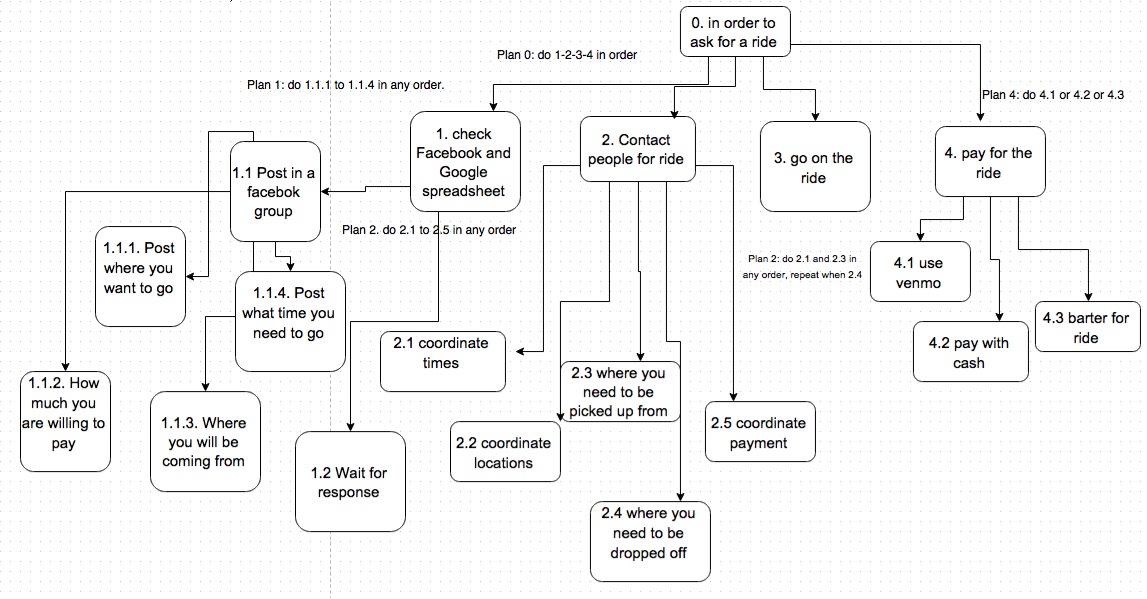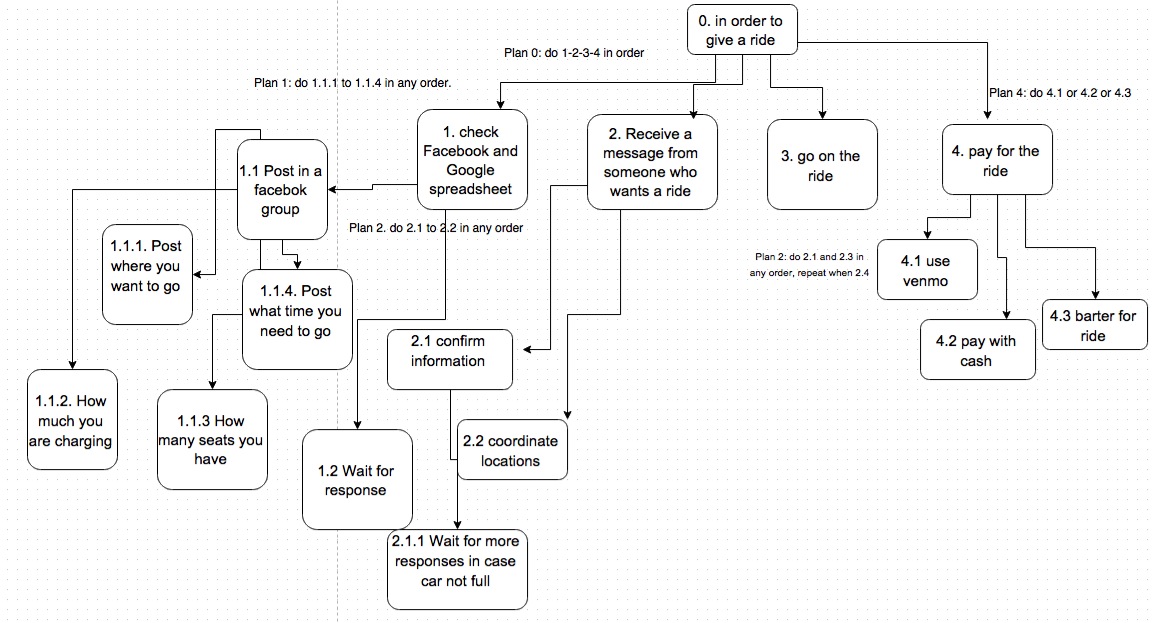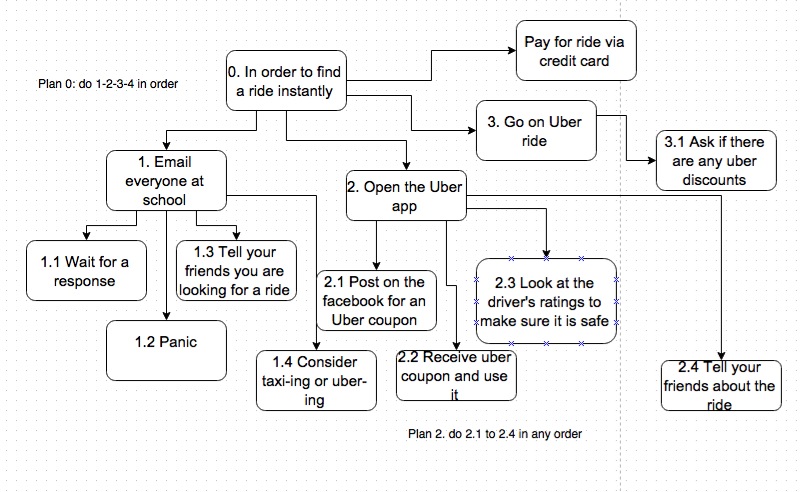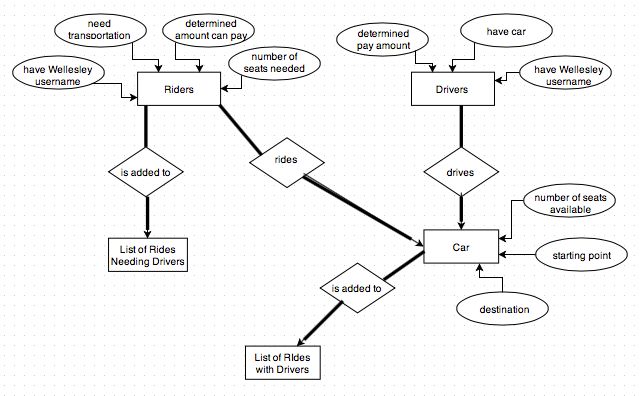User Analysis
Kelsey (light use) is likely to use a rideshare app once a month. She is interested in arranging rides to the Natick Mall for shopping, and never for social purposes. She is very organized and would know at least a week in advance when she was
going to make a trip, and she would like to be able to arrange her ride far ahead of time. She arranges these rides from her dorm room. She has some worries about using rideshare apps, including the fear that she will end up stranded somewhere
(mistrusting the driver on the other end), as well as a feeling that it is unsafe to use rideshare apps late at night.
Julia (medium use) will use a rideshare app anywhere from once a week to multiple times per week. She often finds herself using it in dire situations while she is out in public, such as if taking the bus would make her late, or if there is bad weather.
She will arrange these rides in public, usually outdoors and under possibly stressful conditions. She doesn’t know when she will be using the app in advance, so her arrangements are always last minute. She is concerned about the cost of rideshare
apps—they are often very expensive. She tries to get people in her area from Wellesley to share the ride with her, to save money. She also prefers to ride with other students for safety, and doesn’t think that people should be in a car alone from
one of these apps.
Kathryn (most use) will use a rideshare app at least once or twice a week, and maybe up to four times a week if she’s traveling and in public. She finds that rideshare apps are often more time-efficient and convenient than public transportation (for example,
it cuts out waiting hours for the next commuter rail train). She will also use them if the weather is bad, or if she would have to walk a long distance otherwise. She tries to always plan ahead with arranging her rides, but sometimes she will
arrange one last minute if public transportation is inefficient. After she has arranged a ride, she will have the app open constantly to see where the driver is, how long it will take them to get to her, and how long her own trip will take. Something
that has frustrated her in the past is being matched up with a driver who doesn’t know the area, and so they take longer (and so she is charged more). One of her main concerns about using these apps is the cost of a ride, so she will try to ride
with someone and split the costs if possible. She is also concerned about alleged sexual assault cases involving these rideshare apps, so she thinks it is also important for safety. She would like to see a greater emphasis on safety with these
apps.
Andrea (traveling purposes) is likely to use a rideshare app up to a few times a month for travel purposes, namely getting from the airport or South Station to Wellesley when returning to college after a break or travel. Whenever she arranges a ride it
is a last-minute, rushed decision, but she doesn’t mind doing this because she trusts the services provided by rideshare apps, and because she knows they will be cheaper than taxis. Her only concern about rideshare apps is that they are expensive.
Sam (driver) offers rides to students. She uses ride sharing to make money as a driver. She is most actively offering rides to students before or after breaks, when many of them want rides to and from the airport, or train station. She always plans ahead
with students who want these rides so she can make sure it will fit in her schedule, and in case she can fit more students in her car for a trip. She arranges these trips in her dorm room beforehand. Some of her concerns as a driver are making
sure that she is paid fairly for her time.
Task Analysis
-
Join a ride.
We found that most people passively wait to see if there is an opportunity to join a ride instead of creating a post about one for themselves. This involves being signed onto social media and being aware of posts that are happening.

-
Ask for a ride.
In the case that you can’t find a preexisting ride on Facebook or Gmail, post about it yourself. This involves waiting for people to see if they’ll join, but regardless, you’ll go on the ride if you can’t find someone anyway.

-
Give a ride
To give a ride, most people post ahead of time for their availabilities. They know to watch for breaks which is when people post the most about needing rides to the airport or train station.

-
View available rides.
Some people like to plan ahead to give rides and joining rides, and this involves going on all the different resources and collating them yourself.

-
Emergency needs a ride
This is for when you miss the bus and it is very late. You need a ride, but you also want to save money. We found that people tend to use Uber once in order to get coupons, but also that they don’t ask other people if they need rides. Safety is important, but getting home is more important.

Entity Relationship Diagram
